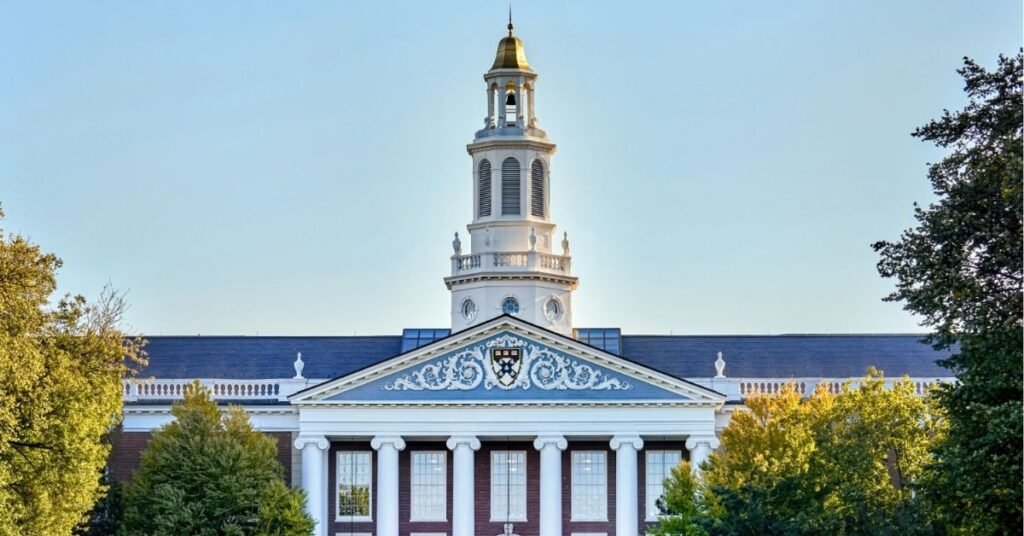When it comes to higher education in the United States, few names carry as much prestige and recognition as the Ivy League.
Known for their academic excellence, influential alumni, and long-standing traditions, Ivy League universities often represent the dream destination for ambitious students worldwide.
But what exactly are Ivy League universities, and how do they differ from other top institutions in the USA? In this guide, we’ll explore everything you need to know — from the full list of Ivy League universities to admission requirements, tuition fees, scholarships, pros and cons, and insights for international students who aspire to join this elite academic community.
What Are Ivy League Universities?
The Ivy League is a group of eight private universities located in the northeastern United States. Originally established as an athletic conference in 1954, the term “Ivy League” has evolved into a symbol of academic excellence, selectivity, and social prestige.
These universities are world-renowned for their rigorous academic standards, cutting-edge research, influential alumni networks, and competitive admissions.
They consistently rank among the top institutions globally and are often seen as a pathway to leadership roles in politics, business, medicine, law, and academia.
Complete List of Ivy League Universities
Here are the eight Ivy League universities, each with its unique strengths and traditions:
- Harvard University (Cambridge, Massachusetts) – Founded in 1636, it is the oldest university in the United States, globally recognized for its excellence in law, business, medicine, and social sciences.
- Yale University (New Haven, Connecticut) – Known for its humanities programs, law school, and strong traditions in leadership and public service.
- Princeton University (Princeton, New Jersey) – Famous for its undergraduate-focused education, mathematics, physics, and public policy.
- Columbia University (New York City, New York) – Offers world-class programs in journalism, business, international affairs, and arts.
- University of Pennsylvania (Philadelphia, Pennsylvania) – Home to the Wharton School, one of the world’s top business schools, along with strengths in medicine and law.
- Dartmouth College (Hanover, New Hampshire) – Known for its liberal arts focus, strong undergraduate teaching, and intimate campus environment.
- Brown University (Providence, Rhode Island) – Famous for its open curriculum, allowing students to design their academic path with flexibility.
- Cornell University (Ithaca, New York) – Offers a wide range of programs, from engineering and agriculture to hospitality and veterinary sciences.
History and Origin of the Ivy League
The Ivy League institutions are among the oldest universities in the United States. Harvard, the first, was founded in 1636, followed by Yale in 1701, Princeton in 1746, and others in the colonial and early American period.
The Ivy League athletic conference was formally created in 1954, but by then, the universities had already gained reputations for academic excellence and social influence. Over time, “Ivy League” came to mean much more than athletics — it became synonymous with academic rigor, prestige, and exclusivity.
Admission Requirements at Ivy League Universities
Getting into an Ivy League university is extremely competitive. Admissions rates typically range from 3% to 8%, depending on the school. Successful applicants demonstrate academic excellence, leadership, and unique talents.
General Admission Criteria Include:
- High GPA: Most admitted students are in the top 10% of their high school class.
- Standardized Test Scores: Many Ivy Leagues require SAT or ACT scores, though some have moved to test-optional policies. Top scores (1500+ SAT or 34+ ACT) are common.
- Extracurricular Activities: Leadership roles, community service, sports, arts, and research experience add significant value.
- Strong Essays: Personal statements and supplemental essays help demonstrate individuality and fit.
- Recommendation Letters: Academic and professional references are highly influential.
- Interviews: Many Ivy Leagues conduct interviews to assess communication skills, personality, and motivation.
International students must also demonstrate English proficiency through tests such as TOEFL or IELTS, unless exempted.
Tuition Fees and Cost of Living
Ivy League universities are among the most expensive in the world.
Average Annual Tuition (2025):
- $55,000 – $65,000 (undergraduate tuition)
- Graduate and professional programs can range higher, especially in medicine, business, and law.
Additional Costs:
- Housing and meals: $15,000 – $20,000 per year
- Books and supplies: $1,000 – $2,000 per year
- Health insurance and fees: $2,000 – $4,000 per year
Overall, students can expect to spend $75,000 – $90,000 annually on tuition and living expenses.
Scholarships and Financial Aid
Despite high tuition costs, Ivy League universities are known for generous financial aid policies. Most follow a need-blind admissions process for domestic students and meet 100% of demonstrated financial need.
For international students, aid varies but can be substantial.
Scholarship Opportunities Include:
- Harvard Financial Aid Initiative – Covers full tuition for families earning under $85,000 annually.
- Yale International Aid Program – Offers need-based aid to all admitted students.
- Princeton Aid Program – Known for replacing student loans with grants.
- Cornell University Grants – Available for both domestic and international students.
Merit-based scholarships are rare, but need-based aid ensures that admitted students can afford to study, regardless of financial background.
Life at Ivy League Universities
Life at an Ivy League school goes beyond academics. Students enjoy vibrant campus cultures, historic traditions, and strong extracurricular opportunities.
- Diverse Student Communities: Ivy Leagues attract students from all over the world.
- Networking: Alumni networks open doors to top careers in law, medicine, business, politics, and technology.
- Research Opportunities: Undergraduates and graduates participate in cutting-edge projects.
- Clubs and Societies: From debate teams to entrepreneurship incubators, there are hundreds of student organizations.
- Athletics: Despite their academic focus, Ivy Leagues still emphasize sports, with facilities and varsity teams.
Ivy League vs Other Top Universities
While the Ivy League is prestigious, it is not the only group of world-class universities in the United States. Institutions such as MIT, Stanford, and Caltech are not Ivy League members but are often ranked higher in STEM fields.
- MIT: Best for technology, engineering, and computer science.
- Stanford: Strong in business, entrepreneurship, and innovation.
- Caltech: Renowned for physics, chemistry, and engineering.
The Ivy League’s strength lies in its balance of academics, tradition, influence, and networking opportunities.
Best Ivy League Universities for International Students
International students often prefer Ivy Leagues that provide extensive support services, English-taught programs, and global alumni communities.
- Harvard University: Offers the largest international student community among Ivies.
- Columbia University: Located in New York City, ideal for global exposure.
- University of Pennsylvania: Strong international programs, especially in business.
- Yale University: Known for cultural diversity and global outreach initiatives.
Public Ivy League Universities
Although the Ivy League itself includes only private institutions, the term “Public Ivy” describes public universities that provide an education comparable to Ivy League standards but at a lower cost.
Examples include:
- University of California, Berkeley
- University of Michigan, Ann Arbor
- University of Virginia
- University of North Carolina at Chapel Hill
- University of Texas at Austin
- College of William & Mary
Public Ivies are excellent alternatives for students who want quality education with reduced tuition fees, especially for in-state students.
Pros and Cons of Ivy League Universities
Pros:
- Global recognition and prestige
- Elite faculty and research facilities
- Strong alumni networks and career opportunities
- Generous financial aid for admitted students
- Diverse academic programs and interdisciplinary opportunities
Cons:
- Extremely competitive admissions (acceptance rates often below 5%)
- Very high tuition and living expenses without aid
- Intense academic and social pressure
- Preference for well-rounded applicants, making admission difficult for students with narrow interests
Career Opportunities and Alumni Success
Graduating from an Ivy League university opens doors worldwide. Alumni often hold leadership roles in government, business, technology, media, and academia.
- Business: Many Ivy graduates become CEOs, entrepreneurs, and industry leaders.
- Politics: Several U.S. presidents, senators, and world leaders are Ivy alumni.
- Law and Medicine: Ivy Leagues host some of the top law and medical schools globally.
- Technology and Innovation: Alumni play key roles at companies like Google, Apple, and Microsoft.
The average starting salary for Ivy League graduates is significantly higher than the U.S. national average, often exceeding $80,000 annually for undergraduates.
Conclusion:
The Ivy League universities remain symbols of academic excellence, tradition, and global influence. Whether you aim for a career in business, law, medicine, politics, or science, these universities provide world-class education, unparalleled networking, and lifelong opportunities.
For students worldwide, the challenge is not just affording the cost but gaining admission. With careful preparation, strong academics, and unique achievements, aspiring students can earn a place among the world’s most prestigious academic communities.
While the Ivy League is not the only path to success, it represents the pinnacle of higher education for many. By understanding the opportunities, challenges, and alternatives, students can make informed choices about pursuing their educational journey in the United States.


